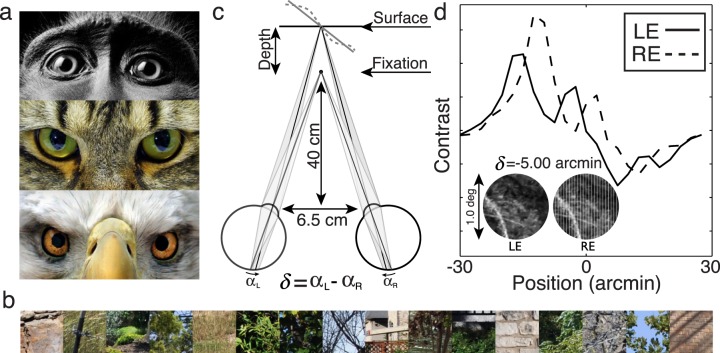Figure 1.
Natural scene inputs, disparity geometry, and example left and right eye signals. (a) Animals with front facing eyes. (b) Example natural images used in the analysis. (c) Stereo geometry. The eyes are fixated and focused at a point straight ahead at 40 cm. We considered retinal disparity patterns corresponding to fronto-parallel and slanted surfaces. Non-planar surfaces were also considered (see Discussion). (d) Photographs of natural scenes are texture mapped onto planar fronto-parallel or slanted surfaces. Here, the left and right eye retinal images are perspective projections (inset) of a fronto-parallel surface with 5 arcmin of uncrossed disparity. Left and right eye signals are obtained by vertically averaging each image; these are the signals available to neurons with vertically oriented receptive fields. The signals are not identical shifted copies of each other because of perspective projection, added noise, and cosine windowing (see text). We note that across image patches there is considerable signal variation due to stimulus properties (e.g., texture) unrelated to disparity. A selective, invariant neural population must be insensitive to this variation.

